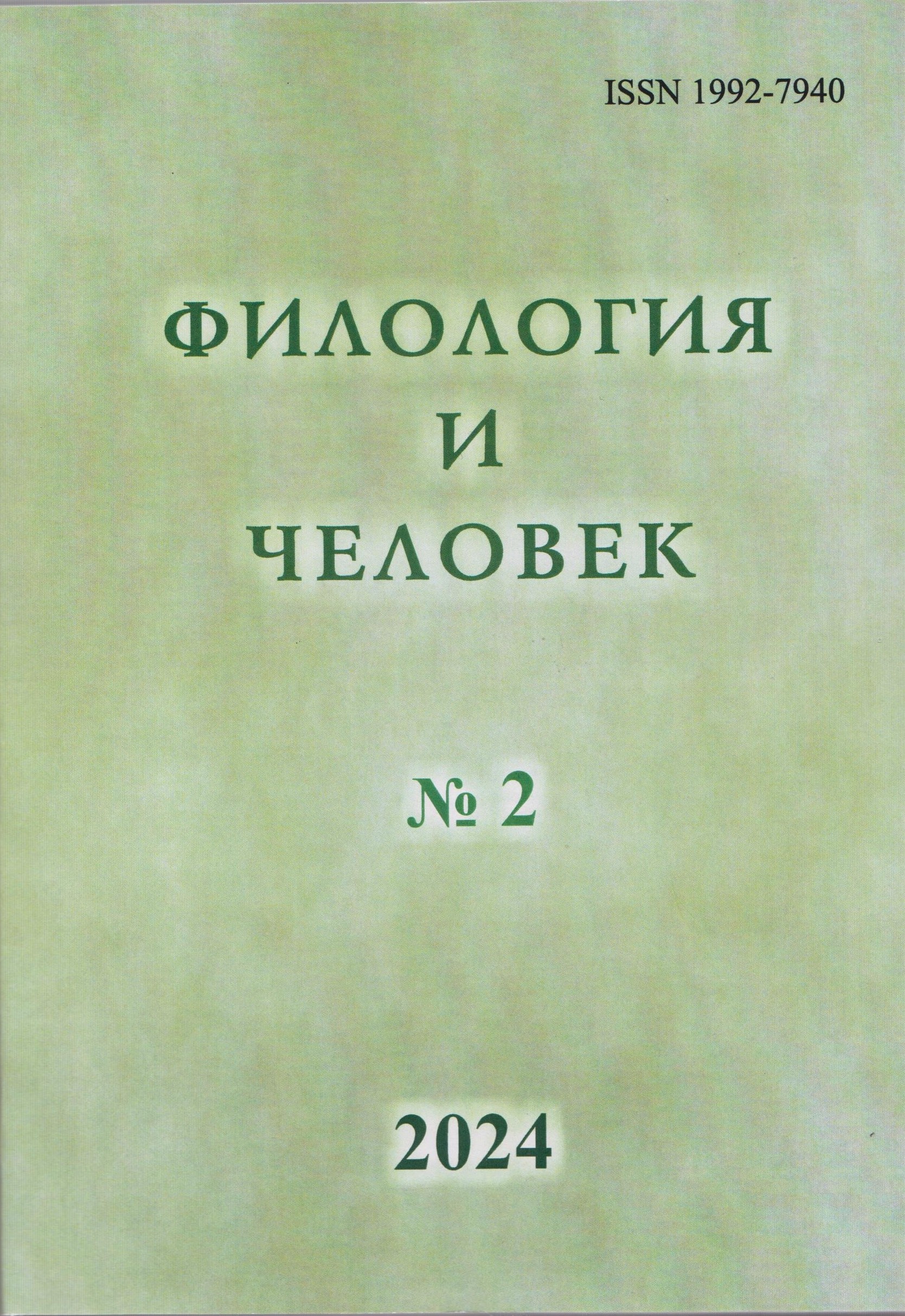Forest Topos in Chekhov’s works of the 1890s—1900s.
Abstract
The article is devoted to identifying the specifics of the forest topos in the works by A.P. Chekhov in his last creative decade. The relevance of the study is due to the necessity to revise the boundaries of the beginning of modernism in Russian literature, their transfer from the 1900s to the 1880s. The author of the article demonstrates non-classical changes using spatial material, this determines the novelty of the research. One hundred twelve textual extracts with the topos of the forest were identified and analyzed, the types of modality of this space and the characteristic of classical and non-classical literature were described, and the analysis of the types modality of the topos in the works by A. P. Chekhov was carried out. The topos of the forest in the last creative decade of the writer appears in three types of modality: a living forest, a forest as a symbol of mismanagement, a place of harm, and a forest as a place of obsession. The topos in all cases is complexly constructed and built on a combination of biblical tradition, fairy tale tradition and individual author's myth. The study confirms the results we previously obtained while analyzing other spatial components in Chekhov’s works of that period, which allows us to speak about an earlier beginning of the modernization processes.
Downloads
Metrics
References
Чехов А. П. Полное собрание сочинений и писем в 30 томах. М. 1974-1983.
Баевский В. С. Лингвистические, математические, семиотические и компьютерные модели в истории и теории литературы. М., 2001.
Басинский П. В. Горький. М., 2006.
Бахтин М. М. Формы времени и хронотопа в романе: очерки по исторической поэтике // Вопросы литературы и эстетики. М., 1975.
Бердников Г. П. Чехов. М., 1974.
Бибихин В. В. Лесной человек Ницше. [Электронный ресурс]. URl: http://bibikhin.ru/lesnoy_chelovek_nitsche.
Бройтман С. Н. Поэтика русской классической и неклассической лирики. М., 2008.
Гитович Н. И. Летопись жизни и творчества А. П. Чехова. М., 2000.
Горячева М.О. Проблема пространства в художественном мире А.П.Чехова: автореф. дис. <...> канд. филол. наук. М., 1992.
Громов М. П. Книга о Чехове. М., 1993.
Комаров С. А. А. Чехов – В. Маяковский: комедиограф в диалоге с русской культурой конца XIX – первой трети XX века. Тюмень, 2002.
Коренева М. Ю. Д. С. Мережковский и немецкая культура (Ницше и Гете. Притяжение и отталкивание) // На рубеже XIX и XX веков. Из истории международных связей русской литературы. Л., 1991.
Лотман Ю. М. Структура художественного текста. М., 1969.
Лотман Ю. М. В школе поэтического слова: Пушкин. Лермонтов. Гоголь. М., 1988.
Малюгин Л. А., Гитович И. Е. Чехов. М., 1983.
Мережковский Д. С. О причинах упадка и новых течениях русской литературы. М., 2016 [Электронный ресурс]. URL: https://www.litres.ru/book/dmitriy-merezhkovski/o-prichinah-upadka-i-o-novyh-techeniyah-sovremennoy-r-175053/.
Минц З. Г. Структура «художественного пространства» в лирике Ал. Блока // Поэтика Александра Блока. СПб, 1999.
Ницше Ф. Так говорил Заратустра // Полное собрание сочинений в тринадцати томах. Т. 4. М., 2007.
Пропп В. Я. Исторические корни волшебной сказки. М., 2000.
Разумова Н.Е. Творчество А.П. Чехова в аспекте пространства. Томск, 2001.
Рейфилд Д. Жизнь Антона Чехова. М., 2022.
Словарь библейских образов. СПб., 1998.
Сухих И. Н. Проблемы поэтики А. П. Чехова. СПб, 2007.
Хайнади З. Архетипический топос // Литература. 2004 № 29.
Червинскене Е. П. Единство художественного мира. А. П. Чехов. Вильнюс, 1976.
Чудаков А. П. Поэтика Чехова. М., 1971.
Редакционная коллегия научного журнала «Филология и человек» придерживается принятых международным сообществом принципов публикационной этики, отраженных, в частности, в рекомендациях Комитета по этике научных публикаций (Committee on Publication Ethics (COPE), Кодекс этики научных публикаций), а также учитываeт ценный опыт авторитетных международных журналов и издательств.
Во избежание недобросовестной практики в публикационной деятельности (плагиат, изложение недостоверных сведений и др.), в целях обеспечения высокого качества научных публикаций, признания общественностью полученных автором научных результатов каждый член редакционной коллегии, автор, рецензент, издатель, а также учреждения, участвующие в издательском процессе, обязаны соблюдать этические стандарты, нормы и правила и принимать все разумные меры для предотвращения их нарушений. Соблюдение правил этики научных публикаций всеми участниками этого процесса способствует обеспечению прав авторов на интеллектуальную собственность, повышению качества издания и исключению возможности неправомерного использования авторских материалов в интересах отдельных лиц.





